Use of fire, earliest stone tool making
The 2025 excavation by the Institute of Archaeology brought a very new understanding of the stratigraphic structure of the Nguom rock shelter site (Than Xa commune, Thai Nguyen province). While previous excavations only identified 3-6 cultural layers, the new excavation revealed a total of 10 cultural layers. In addition, the excavation process discovered stone tools and flakes along with animal remains.
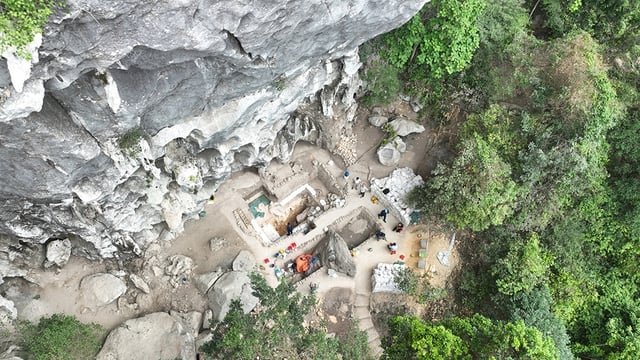
Nguom rock roof seen from above
PHOTO: PHAM THANH SON
According to Dr. Pham Thanh Son, the person in charge of the excavation, the LX cultural layer has red-orange sediments, containing limestone nodules of various sizes. This sediment also contains many fragmentary tools, flakes, tool cores, raw stone nodules, animal bones and freshwater mollusk shells. "In particular, some samples of charcoal and ash were discovered along with some burnt bone fragments. This development is similar to the research results from the excavation in 2024. This could be the clearest evidence of the first appearance of fire in the Middle Paleolithic period in Vietnam, dating from 124,500 to 100,000 years ago," said Dr. Son.
According to the research team, many burnt bone fragments, bivalve mollusc samples that live in rivers and streams, some charcoal samples and a significant number of stone tools are direct evidence of human presence. At the same time, this is also evidence that fire was used at Nguom rock shelter from times over 100,000 years ago.
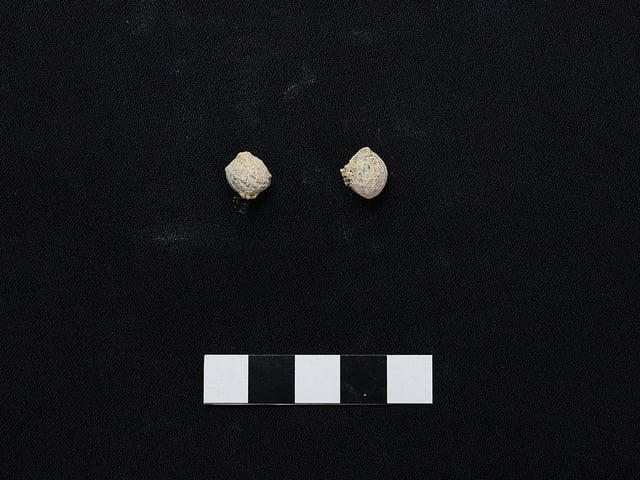
Seeds dated 100,000 - 125,000 years old at Nguom rock shelter
PHOTO: PHAM THANH SON
Many seeds of the rice plant were also discovered during the excavation in 2025. According to the Institute of Archaeology: "This may be the clearest evidence of the behavior of searching for and consuming plant seeds recorded for the first time in our country at a site dating back over 124,500 years ago. In the current state of documents, Nguom is also the place where the earliest evidence of fire use in Vietnam and the entire Southeast Asia region is recorded."
In addition, the excavation team also hypothesized that the earliest settlement date at Nguom is definitely more than 124,590 years old. The predicted date could be from 140,000 to 150,000 years old. And up to now, with an absolute age that is not at the deepest level in the evolution of the cultural layer at Nguom rock shelter, we can confirm that this is the first type of cave/rock shelter relic that records evidence of the earliest stone tool making and use process in the entire territory of Vietnam and mainland Southeast Asia. This is also the second site with an absolute age of over 130,000 years old in the entire Southeast Asia region.
Potential to become a UNESCO heritage
Associate Professor Dr. Bui Van Liem, Vice President of the Archaeological Association, highly appreciated the research at Nguom rock shelter. According to him, this is a large excavation, using many modern research techniques.
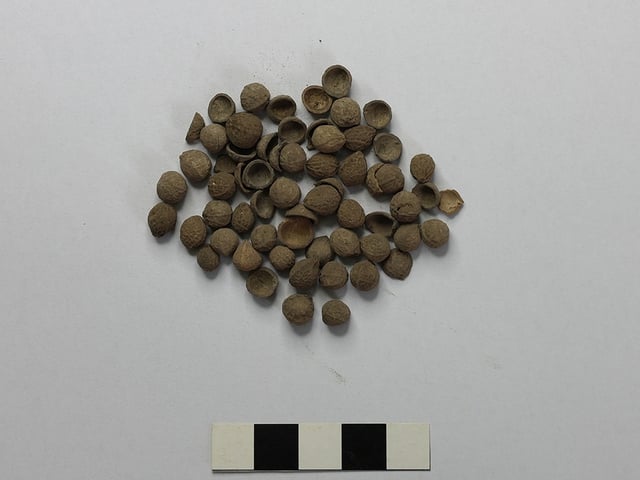
Seeds found in Nguom rock shelter
PHOTO: PHAM THANH SON
Regarding the research results, Dr. Nguyen Van Doan, Director of the National Museum of History, said that the museum will approach and from there can adjust the content of the display on Nguom rock shelter in terms of age, type of stone relics and flora and fauna relics discovered from the 2024 - 2025 excavation. Accordingly, the oldest residential age previously determined to be only 23,000 years old can now be up to over 125,000 years old. "The National Museum of History will approach the new research results to adjust the display," said Dr. Doan.
Meanwhile, Associate Professor Dr. Nguyen Khac Su (Institute of Archaeology) said that this is a typical relic of mainland Southeast Asia, worthy of becoming a special national relic. This is also the reason why the research team proposed to make a special national relic dossier for this relic. According to Associate Professor Dr. Nguyen Khac Su, we can think about making a UNESCO heritage dossier for Nguom rock shelter. Previously, Mr. Su was part of a group of experts who made a UNESCO dossier for Trang An mixed heritage.
The Institute of Archaeology's research also warns about the safety of the relic. Accordingly, Nguom rock shelter is not only famous domestically but its values are also continental, a major center of human evolution and stone industry skills in Southeast Asia, so protecting the current status of the relic is urgent. Currently, in addition to the lack of supervision and inspection, the situation of tourists visiting the relic often moving down to the excavation pit, burning incense in the wrong place will cause the relic's landscape to lose its natural beauty. Therefore, in the immediate future, management agencies need to erect more signs to introduce the value of the relic, and at the same time have specific instructions to avoid unwanted impacts and encroachments.
Source: https://thanhnien.vn/mai-da-nguom-noi-su-dung-lua-va-che-tac-cong-cu-da-som-nhat-dong-nam-a-18525072721241787.htm




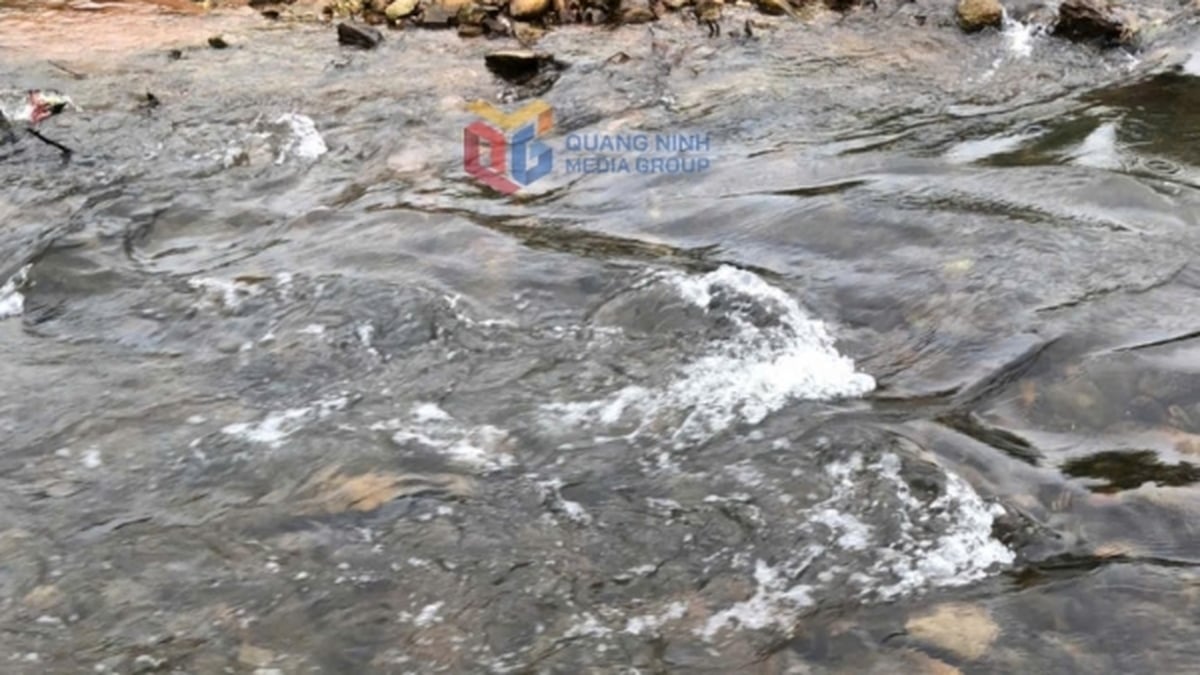


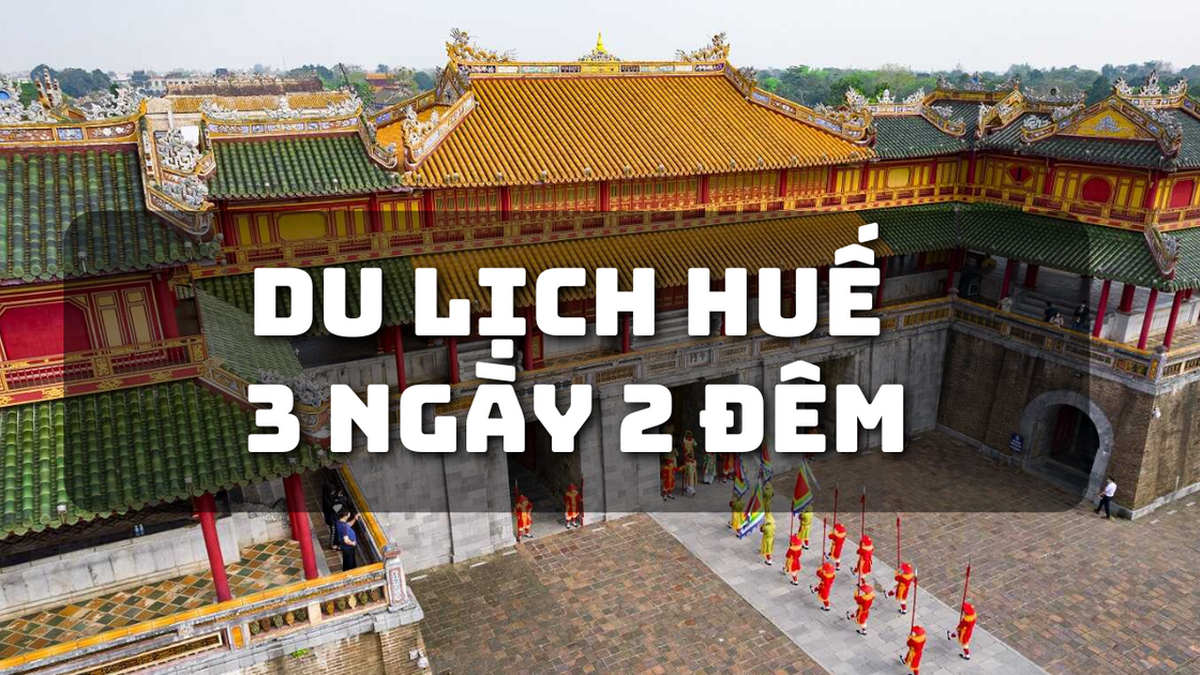



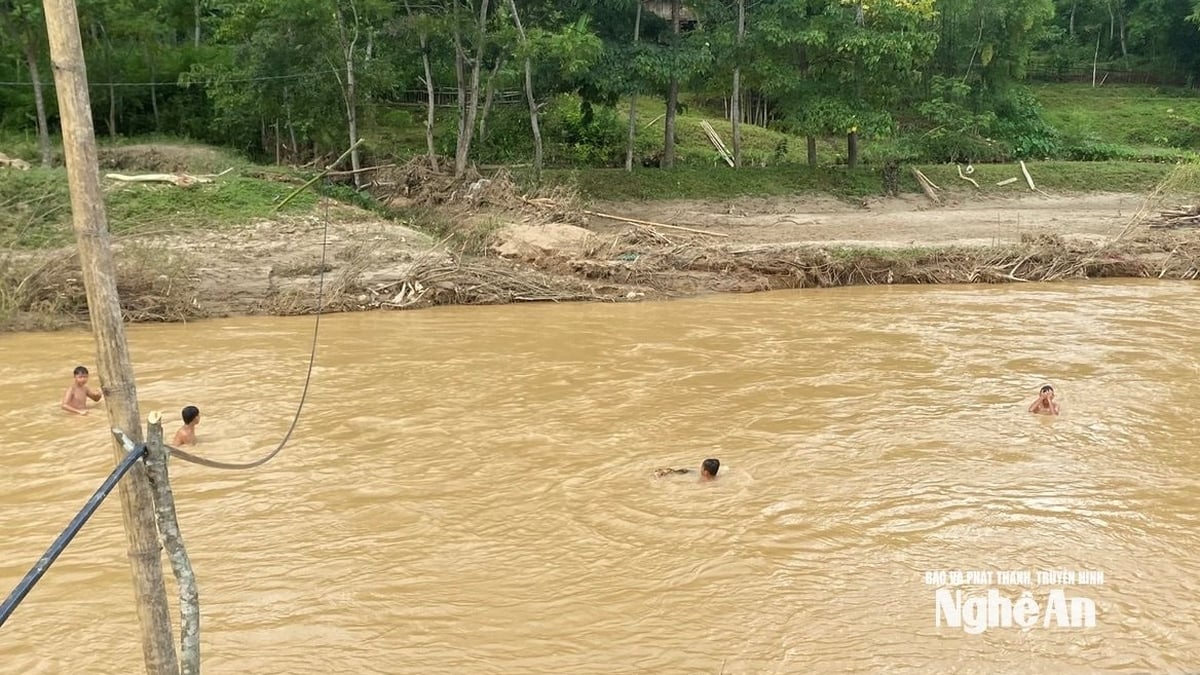





















































































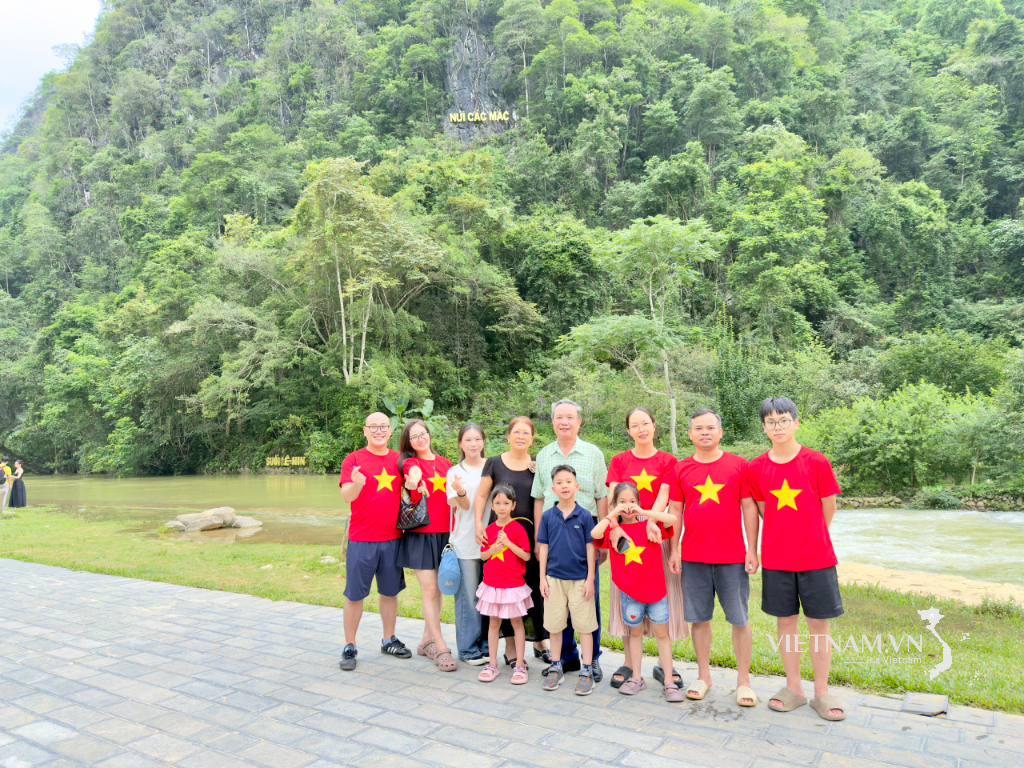



Comment (0)